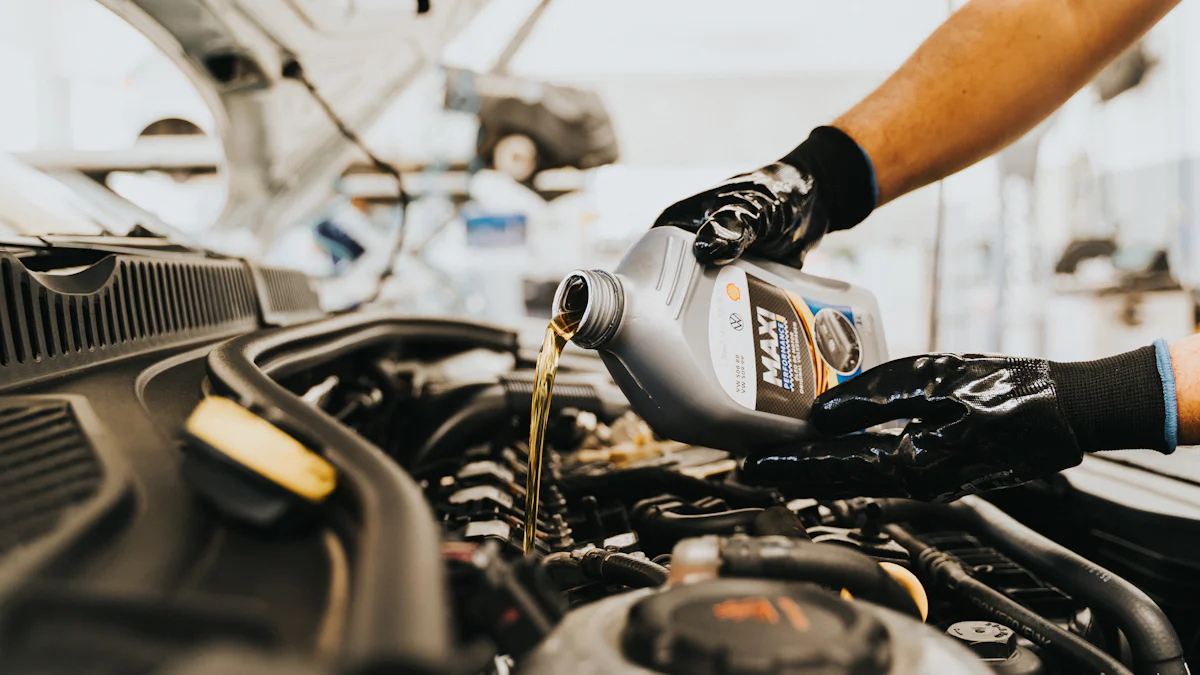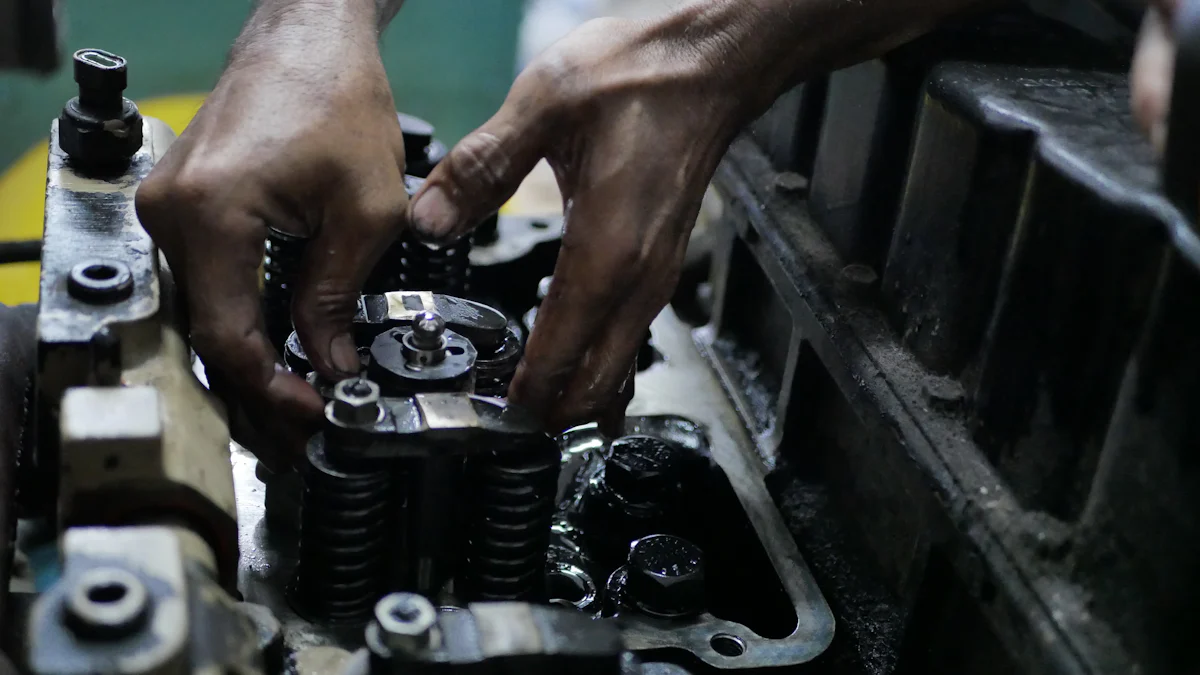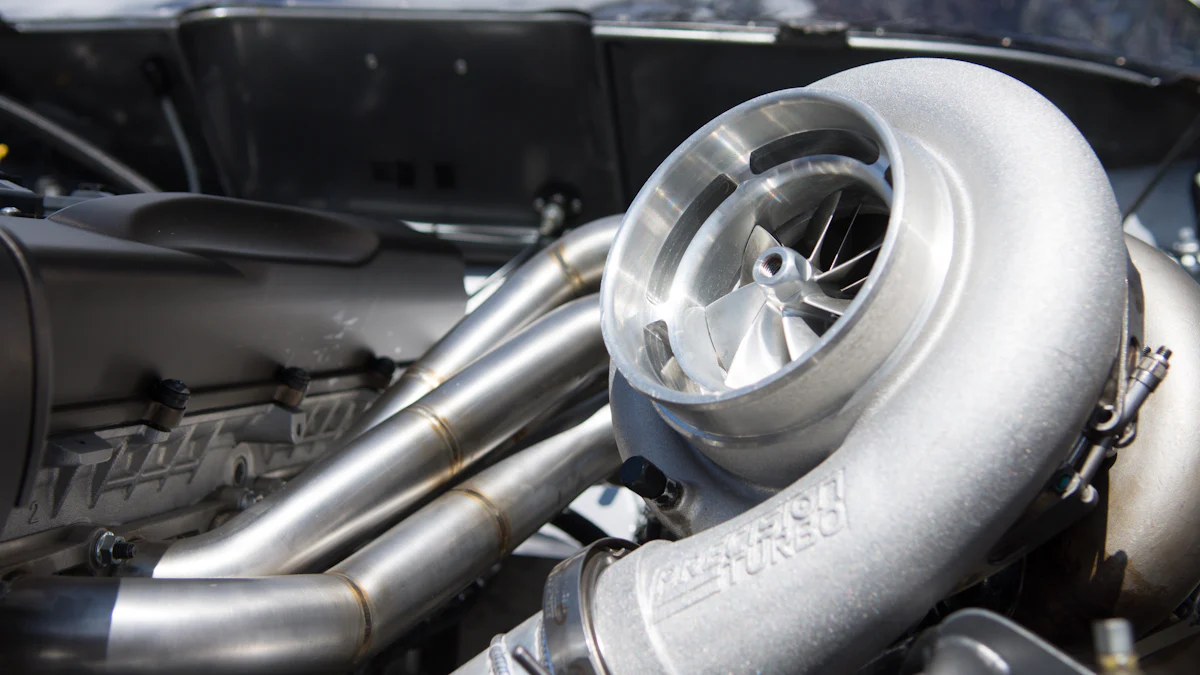
Understanding the significance of oil leaks is crucial for vehicle owners. The engine exhaust manifold plays a vital role in the vehicle’s operation, directing exhaust gases away from the engine. In this blog, we will delve into the five common causes of oil leaking into the exhaust manifold, shedding light on potential issues that car owners may encounter.
Valve Cover Gasket Leak

Overview
The valve cover gasket is a crucial component in the engine system. Its primary function is to prevent oil leaks by sealing the gap between the valve cover and the cylinder head. When this gasket fails, it can lead to oil seepage into the exhaust manifold. Recognizing the symptoms of a leak is essential for maintaining optimal engine performance.
Function of the valve cover gasket
The valve cover gasket acts as a barrier, ensuring that oil remains contained within the engine. It creates a tight seal between the valve cover and the cylinder head, preventing oil from escaping and causing potential damage.
Symptoms of a leak
- Visible oil drips: One common sign of a valve cover gasket leak is seeing oil drips or puddles beneath your vehicle.
- Burning smell: If you notice a burning odor coming from your engine bay, it could indicate that oil is leaking onto hot components like the exhaust manifold.
- Low oil levels: A sudden drop in your engine’s oil level without any noticeable leaks elsewhere may suggest a leak through the valve cover gasket.
Causes
Several factors can contribute to a valve cover gasket leak, with wear and tear being one of the primary culprits.
Wear and tear
Over time, the constant exposure to heat and pressure can cause the valve cover gasket to deteriorate. This degradation weakens its sealing properties, leading to potential leaks into critical engine components like the exhaust manifold.
Improper installation
In some cases, improper installation of the valve cover gasket during maintenance or repairs can result in leaks. If not fitted correctly or if there are gaps in the seal, oil can escape and find its way into areas where it shouldn’t be.
Solutions
Addressing a valve cover gasket leak promptly is crucial to prevent further damage to your engine and maintain optimal performance.
Gasket replacement
Replacing the faulty valve cover gasket with a new one is often necessary to resolve leaks effectively. Ensure that you use high-quality replacement parts and follow proper installation procedures to prevent future issues.
Regular maintenance
Routine inspections of your engine’s components can help detect early signs of leaks before they escalate. By conducting regular maintenance checks, you can identify potential issues with the valve cover gasket early on and take preventive measures.
Turbocharger Issues

Overview
Understanding the role of the turbocharger is essential for vehicle owners to grasp its significance in engine performance. The turbocharger functions as a compressor that increases the engine’s power by forcing more air into the combustion chamber. This process enhances fuel combustion and overall engine efficiency. Recognizing the symptoms of turbocharger oil leaks can help prevent potential issues from escalating.
Role of the turbocharger
The turbocharger plays a crucial role in enhancing engine performance by increasing power output through improved air compression. By compressing air before it enters the engine, the turbocharger boosts overall efficiency and allows for better combustion, resulting in increased power generation.
Symptoms of turbocharger oil leaks
- Visible oil residue: One common sign of a turbocharger oil leak is spotting oil residue around the turbo area or on surrounding components.
- Decreased engine performance: If you notice a decline in your engine’s power output or acceleration, it could indicate an issue with oil leaking from the turbocharger.
- Excessive exhaust smoke: An increase in visible exhaust smoke, especially if it appears bluish-gray, may suggest that oil is leaking into the exhaust system through the turbocharger.
Causes
Several factors can contribute to oil leaks within a turbocharged system, with worn seals and loose shafts being primary concerns for vehicle owners.
Worn turbo seals
Over time, the seals within a turbocharger can deteriorate due to high temperatures and pressures. This wear and tear can lead to gaps in the seals, allowing oil to escape into areas where it shouldn’t be present.
Loose turbo shaft
A loose or misaligned turbo shaft can also result in oil leaks within the system. If not properly secured, the shaft can cause disruptions in seal integrity, leading to potential oil seepage into critical components like the exhaust manifold.
Solutions
Addressing turbocharger issues promptly is crucial to prevent further damage to your vehicle’s engine and ensure optimal performance on the road.
Turbocharger inspection
Regular inspections of your vehicle’s turbo system can help detect early signs of wear or damage. By visually examining the turbo components and checking for any visible leaks or abnormalities, you can identify issues before they escalate.
Seal replacement
If worn seals are identified as the cause of oil leaks, replacing them with high-quality replacements is essential. Properly fitting new seals and ensuring a secure seal between components can prevent future leakage problems effectively.
Faulty Valve Seals
Overview
Valve seals play a crucial role in preventing oil leaks within the engine system. The primary function of valve seals is to ensure that oil does not escape from the cylinder head into other components of the engine. Recognizing the symptoms associated with faulty valve seals is essential for maintaining optimal engine performance.
Function of valve seals
Valve seals act as barriers that prevent oil from leaking past the valves and entering areas where it shouldn’t be present. By creating a secure seal around the valves, these seals help maintain proper lubrication within the engine and prevent oil from escaping into the exhaust manifold.
Symptoms of faulty valve seals
- Visible oil residue: One common indication of faulty valve seals is observing oil residue around the valves or on surrounding engine parts.
- Decreased engine performance: If you notice a decline in your vehicle’s power output or experience issues with acceleration, it could be a sign of faulty valve seals allowing oil leakage.
Causes
Several factors can contribute to the development of faulty valve seals, with age and lack of maintenance being significant concerns for vehicle owners.
Age and wear
As vehicles age, the materials used in valve seals can deteriorate due to prolonged exposure to heat and pressure. This deterioration can lead to cracks or gaps in the seals, allowing oil to leak into critical engine components like the exhaust manifold.
Poor maintenance
Neglecting regular engine maintenance, such as failing to replace worn-out valve seals, can also result in leaks. Without proper care and attention, valve seals may degrade faster, leading to potential issues with oil leakage within the engine system.
Solutions
Addressing faulty valve seals promptly is crucial to prevent further damage to your vehicle’s engine and ensure optimal performance on the road.
Valve seal replacement
Replacing worn or damaged valve seals with high-quality replacements is essential for resolving leaks effectively. By installing new valve seals, you can restore proper sealing within the engine system and prevent oil from escaping into unwanted areas.
Regular engine checks
Conducting routine inspections of your vehicle’s engine components can help identify early signs of valve seal wear or damage. By checking for visible leaks or monitoring oil levels regularly, you can detect issues with valve seals before they escalate and take necessary preventive measures to address them promptly.
Cylinder Head Problems
Overview
The cylinder head serves as a crucial component in the engine system, playing a vital role in the combustion process. It acts as a cover for the cylinders, housing important components like the valves and spark plugs. Understanding its significance is essential for vehicle owners to grasp its impact on overall engine performance.
Role of the cylinder head
The cylinder head is responsible for sealing the cylinders and ensuring proper compression within the combustion chamber. It houses the intake and exhaust valves, allowing air and fuel to enter while enabling exhaust gases to exit efficiently. Additionally, it plays a key role in dissipating heat generated during combustion to prevent overheating.
Symptoms of cylinder head issues
- Visible coolant leaks: One common indication of cylinder head problems is observing coolant leaks around the cylinder head area or beneath the vehicle.
- Engine overheating: If your engine consistently runs hot or experiences frequent overheating episodes, it could signal underlying issues with the cylinder head’s cooling capabilities.
- Irregular engine performance: A decrease in engine power output or rough idling may indicate potential problems with the cylinder head affecting combustion efficiency.
Causes
Several factors can contribute to cylinder head problems, with cracks and warping being primary concerns for vehicle owners seeking optimal engine performance.
Cracks in the cylinder head
Cracks found within the cylinder head can have detrimental effects on engine operation. These cracks may not be immediately visible but can lead to coolant leaks or combustion inefficiencies if left unaddressed. Identifying and repairing these cracks promptly is crucial to prevent further damage.
In a specific case involving a BMW 2002tii, a crack was discovered at the left rear corner of the cylinder head, extending through one of the cylindrical bosses where a valve cover stud is threaded. This crack did not penetrate through a combustion chamber but posed risks of coolant leaks and decreased performance.
Warped cylinder head
A warped cylinder head occurs when its surface becomes uneven due to excessive heat or pressure. This warping can lead to improper sealing between components, causing coolant leaks or inefficient combustion processes. Addressing this issue promptly is essential to restore optimal engine functionality.
Another instance involved a crack found between valve seats in a different cylinder head, only becoming visible after undergoing hot-tanking at a machine shop. This highlighted how internal defects can go unnoticed without thorough inspection procedures.
Solutions
Resolving cylinder head problems promptly is crucial to maintain optimal engine performance and prevent further complications on the road.
Cylinder head repair
Engaging in professional repairs for cracked or warped cylinder heads is essential for restoring their structural integrity. Repair processes may involve welding techniques or machining services to address cracks and surface irregularities effectively.
Regular engine inspections
Conducting routine inspections of your vehicle’s engine components can help detect early signs of cylinder head issues before they escalate. By monitoring coolant levels, performing compression tests, and visually inspecting the cylinder head for abnormalities, you can identify potential problems early on and take necessary corrective actions.
Improper Cylinder Tightening
Overview
Proper cylinder base nut tightening procedure is crucial to prevent engine problems and malfunctioning. Following the correct cylinder base nut tightening procedure ensures that all components are securely fastened, reducing the risk of leaks or damage. Understanding the importance of this process can help vehicle owners maintain their engines’ optimal performance.
Importance of proper cylinder tightening
When it comes to engine maintenance, proper cylinder tightening is a fundamental aspect that should not be overlooked. By ensuring that all nuts are tightened to the specified torque levels, car owners can prevent issues such as oil leaks or misalignments that may lead to more significant problems down the line.
Symptoms of improper tightening
Recognizing the signs of improper cylinder tightening is essential for addressing potential issues promptly. If components are not secured correctly, vehicle owners may experience symptoms such as unusual engine noises, decreased performance, or even visible leaks. These indicators highlight the importance of following proper tightening procedures.
Causes
New head gaskets require a specific torque-down procedure which has changed over the decades. Following new head gasket torque-down procedures is essential for preventing leaks and ensuring proper sealing between components.
Incorrect torque application
One common cause of improper cylinder tightening is incorrect torque application during assembly or maintenance. If nuts are overtightened or undertightened, it can result in uneven pressure distribution and potential leaks. Following manufacturer guidelines for torque specifications is crucial to avoid this issue.
Misalignment of components
Another factor that can lead to improper cylinder tightening is misalignment of components during installation. When parts are not aligned correctly before securing them, it can create gaps or uneven surfaces that compromise sealing integrity. Ensuring proper alignment before tightening nuts can prevent future complications.
Solutions
Addressing issues related to improper cylinder tightening requires attention to detail and adherence to recommended procedures.
Proper torque application
To prevent leaks and ensure component integrity, car owners should prioritize proper torque application when tightening cylinders. Using a calibrated torque wrench and following manufacturer specifications for each nut can help maintain consistent pressure levels and prevent overtightening or undertightening.
Professional engine servicing
For complex tasks like cylinder base nut tightening, seeking professional assistance from experienced mechanics is advisable. Professional engine servicing ensures that all components are properly aligned and tightened according to industry standards, reducing the risk of leaks or malfunctions in the long run.
In summary, the blog has highlighted five common causes of oil leaking into the exhaust manifold, emphasizing the importance of regular maintenance to prevent these issues. Car owners should stay vigilant for symptoms and address leaks promptly to avoid further damage. For persistent problems, seeking professional help from experienced mechanics is crucial for effective solutions and optimal engine performance.
Post time: Jun-05-2024



